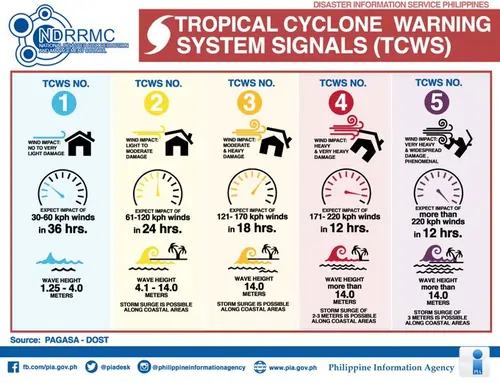
Tropical Cyclone Alert: Essential Guide to Stay Prepared
Be cyclone-ready with Tropical Cyclone Alert: Essential Guide to Stay Prepared. Discover practical tips and strategies to protect your home and family, and stay ahead of the storm.
-ADVERTISEMENT-

Introduction: What You Need to Know About Tropical Cyclones
Tropical cyclones are one of nature’s most powerful and destructive forces, often leaving widespread devastation in their wake. These storms form over warm ocean waters and can bring heavy rainfall, strong winds, and dangerous storm surges.
Preparing ahead of time is crucial to protect both life and property.
This comprehensive guide provides essential information about tropical cyclones, the science behind their formation, the impact they can have, and practical preparedness tips to stay safe.
What is a Tropical Cyclone Alert?
Defining Tropical Cyclones
A tropical cyclone alert is a rotating, organized system of clouds and thunderstorms that originates over warm tropical waters. The center of this storm, known as the “eye,” is surrounded by a wall of intense winds and heavy rain.
These storms are categorized by region and wind speeds:
- Hurricanes: Atlantic and Northeast Pacific
- Typhoons: Northwest Pacific
- Cyclones: Indian Ocean and South Pacific
The Science Behind Cyclone Formation
Tropical cyclones form under specific atmospheric conditions:
- Warm ocean temperatures above 26.5°C
- High humidity and adequate moisture
- Low vertical wind shear, allowing the storm to organize and intensify
- Coriolis effect, causing the system to rotate and spiral
As warm air rises and condenses, it releases heat, fueling the storm’s energy and creating the characteristic swirling motion of a cyclone.
Classification of Tropical Cyclones
Tropical cyclones are categorized by wind speeds and the damage they cause. These classifications guide preparation and response efforts.
| Category | Wind Speed | Impacts |
|---|---|---|
| Tropical Depression | < 39 mph | Minimal damage, heavy rainfall |
| Tropical Storm | 39-73 mph | Moderate damage, risk of flooding |
| Severe Tropical Storm | 74-95 mph | Structural damage, widespread flooding |
| Typhoon | 96-150 mph | Severe damage to infrastructure, power outages |
| Super Typhoon | > 150 mph | Catastrophic damage, life-threatening storm surges |
The Lifecycle of a Tropical Cyclone
Formation Stage
Tropical cyclones begin as clusters of thunderstorms over warm ocean waters. With the right conditions, the storm strengthens and begins rotating, entering its formation stage.
Mature Stage
During the mature stage, the cyclone reaches peak intensity, with the well-known “eye” of the storm becoming visible. Winds and rainfall intensify, leading to maximum damage potential.
Dissipation Stage
As cyclones move over land or cooler waters, they lose their energy source (warm ocean water) and begin to weaken. However, even in dissipation, they can still cause flooding and residual damage.
Regions Most Affected by Tropical Cyclones
Tropical cyclones primarily affect regions close to warm ocean waters. Coastal communities are particularly vulnerable due to the risk of storm surges and flooding.
| Region | Most Affected Areas |
|---|---|
| Pacific Ocean | Philippines, Japan, China |
| Atlantic Ocean | U.S., Caribbean, Gulf of Mexico |
| Indian Ocean | India, Bangladesh, Myanmar |
Factors Contributing to Cyclone Intensity
- Ocean Temperature: Warmer waters fuel storm intensity.
- Atmospheric Conditions: High humidity and low wind shear enhance cyclone formation.
- Wind Shear: When wind shear is low, the storm maintains its structure and increases in power.
Tropical Cyclone Alerts: Understanding the Warning System
Proper warning systems are essential for minimizing the impact of tropical cyclones. The difference between a watch and a warning is critical:
- Cyclone Watch: Issued when a cyclone could develop within 48 hours.
- Cyclone Warning: Issued when a cyclone is expected within 36 hours.
Many countries have localized alert systems that include emergency broadcasts, text alerts, and sirens to inform residents of impending storms.
ADVERTISEMENT-

Impact of Tropical Cyclones on Coastal Communities
Storm Surges
Cyclones push seawater onto land, creating dangerous storm surges that can inundate entire coastal regions.
Flooding
Heavy rainfall leads to flash flooding, overwhelming infrastructure and causing significant water damage.
Strong Winds
Winds exceeding 74 mph can destroy buildings, uproot trees, and create dangerous flying debris.
Landslides
In mountainous regions, torrential rains can trigger landslides, burying homes and roads in debris.
Environmental Consequences of Tropical Cyclones
- Marine Ecosystem Disruption: Cyclones disturb coral reefs and marine life.
- Coastal Erosion: Powerful waves erode coastlines, weakening natural defenses.
- Forest Destruction: High winds can flatten large swaths of forest, affecting biodiversity.
Economic Costs of Tropical Cyclones
The financial toll of cyclones can be immense, especially in densely populated or agriculturally dependent areas.
- Damage to Infrastructure: Rebuilding homes, roads, and bridges requires significant investment.
- Agricultural Losses: Flooded fields and destroyed crops can threaten food security.
- Tourism Impact: Many coastal regions lose years of tourism revenue due to cyclone damage.
How to Stay Prepared: Essential Tips
- Evacuation Plans: Know the safest routes and locations for evacuation. Stay informed through local authorities.
- Secure Your Home: Reinforce roofs, board up windows, and secure outdoor objects to prevent damage from strong winds.
- Emergency Supplies: Stock up on essentials like food, water, batteries, first aid kits, and medications.
- Monitor Updates: Follow weather updates and warnings closely via news channels, radio, or weather apps.
Technological Advances in Cyclone Prediction
Advances in technology are improving the accuracy of cyclone forecasts:
- Satellite Monitoring: Provides real-time data on cyclone formation and movement.
- Doppler Radar: Tracks rainfall and measures storm intensity.
- Computer Models: Forecast cyclone paths and intensities with increasing precision, giving authorities and residents more time to prepare.
Role of Government and International Organizations
Governments and international organizations play a critical role in monitoring, preparing for, and responding to tropical cyclones:
- Disaster Management Agencies: Coordinate evacuations and distribute aid after the storm.
- International Collaborations: Share data and resources to improve storm prediction and response efforts worldwide.
-ADVERTISEMENT-

Climate Change and Its Role in Cyclone Intensity
Climate change is influencing tropical cyclone patterns, with rising temperatures contributing to more frequent and intense storms.
- Rising Sea Levels: Higher seas amplify storm surges and flooding.
- Changing Weather Patterns: Climate change may alter cyclone formation and wind patterns, increasing risks.
Read More About 👉 Tropical Cyclone Alert
Conclusion
Tropical cyclones alert remain a constant threat to coastal and island communities around the world. Through understanding the nature of these storms, staying informed about warning systems, and preparing ahead of time, individuals and governments can minimize the damage and loss caused by these natural disasters.
Continuous advancements in technology, international cooperation, and better preparedness are essential in the fight to protect lives and property from future storms.
Frequently Asked Questions
What causes tropical cyclones?
Tropical cyclones form over warm ocean waters (above 26.5°C) with high humidity and low vertical wind shear. Rising warm air cools and condenses, forming thunderstorms and fueling the storm.
How do tropical cyclones dissipate?
Cyclones dissipate when they move over land or cooler waters, losing their energy source. Although weakened, residual winds and rain can still cause damage.
What’s the difference between a hurricane and a typhoon?
Hurricanes and typhoons are both tropical cyclones. They are simply called different names depending on their location—hurricanes in the Atlantic and typhoons in the Northwest Pacific.
How are tropical cyclones predicted?
Meteorologists use satellite data, radar systems, and computer models to predict cyclone paths and intensity, analyzing sea temperatures, wind patterns, and atmospheric pressure.
Which regions are most at risk?
Tropical and subtropical regions, particularly coastal areas near warm ocean currents, are most vulnerable. Major regions include the Pacific, Atlantic, and Indian Ocean basins.
People Also Search For
- Tropical cyclone alert today
- Tropical cyclone alert today philippines
- Tropical cyclone alert live
- PAGASA Weather Update today
- PAGASA Weather Update today Live
- Typhoon Signal Update today
- Typhoon tracker
Related Links

Rihanna Cruz, is a wordsmith seasoned in three years of online gaming journalism, captivates readers with her passion-fueled articles. She translates complex mechanics into engaging narratives, offering insightful perspectives on mobile RPGs, esports psychology, and more.








